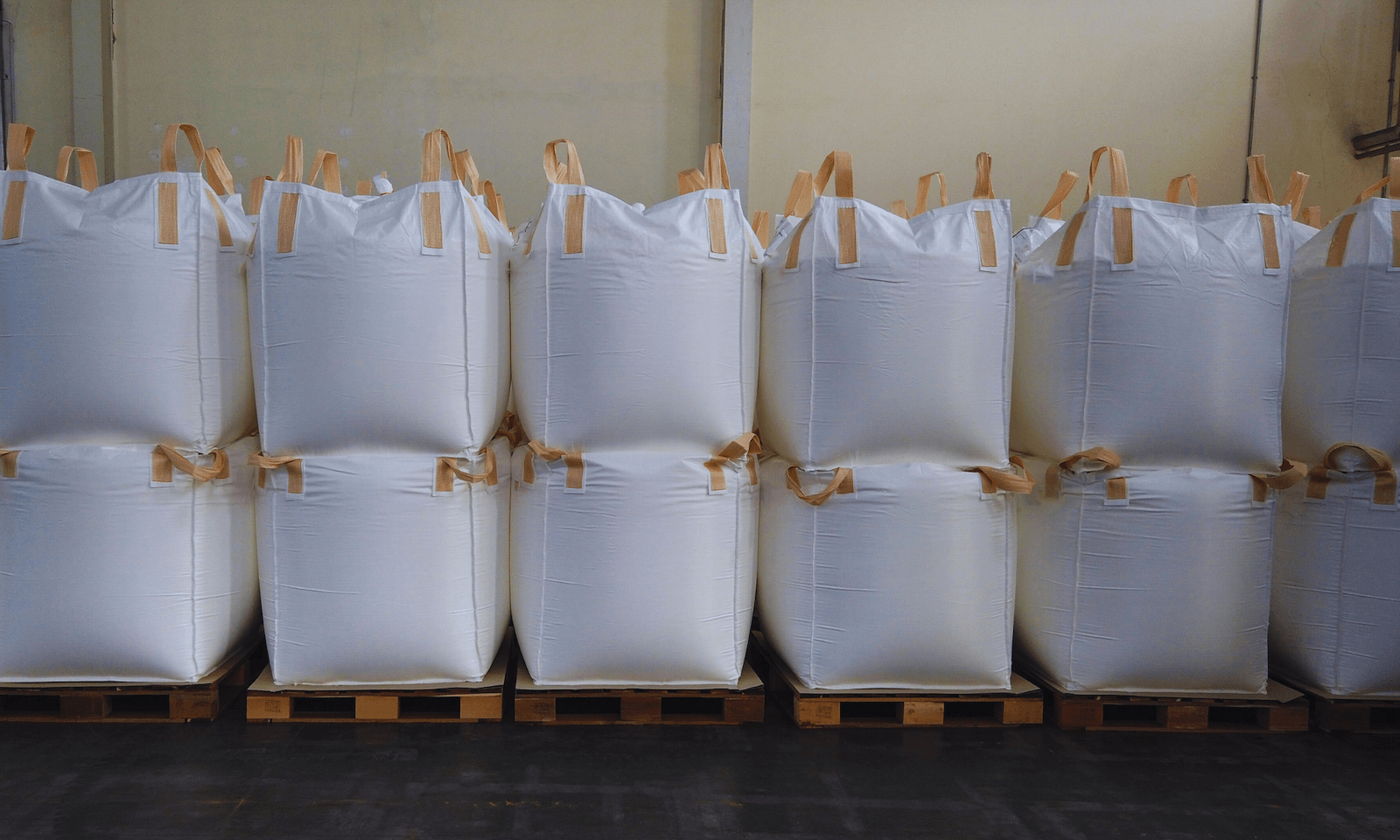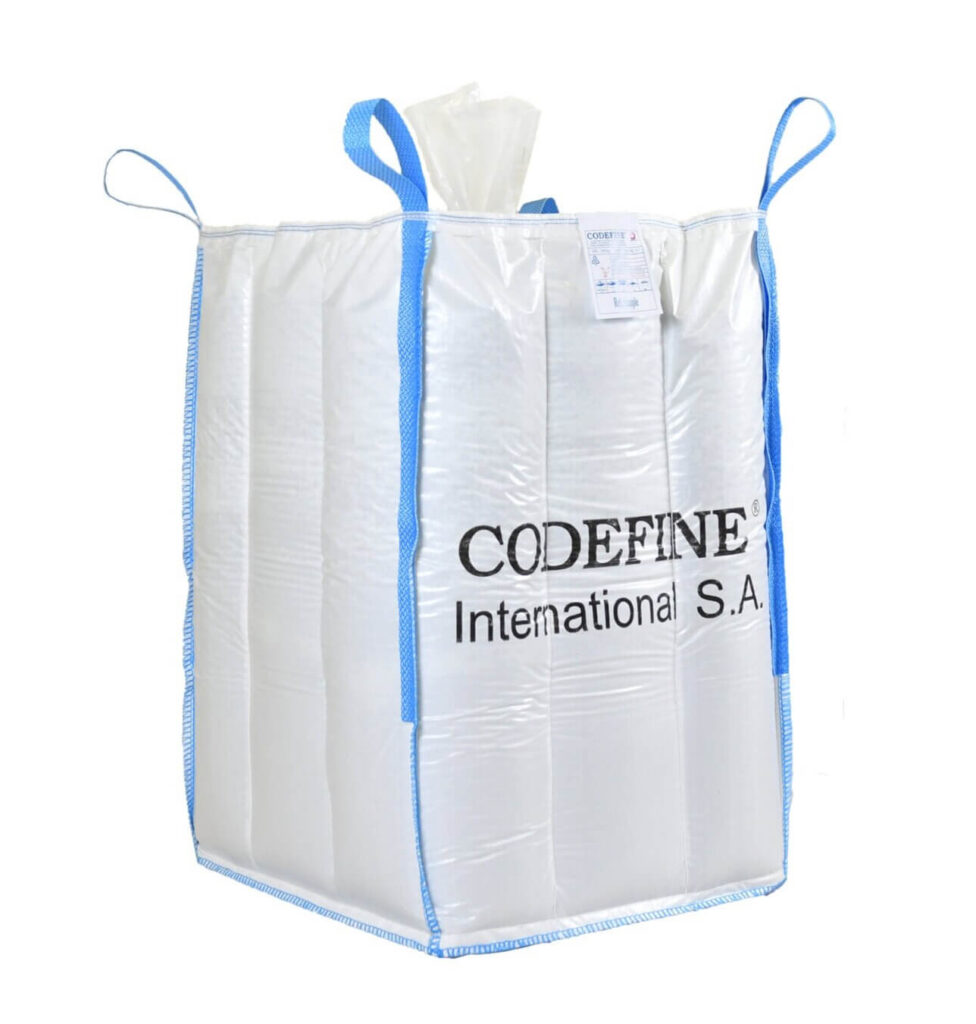Home » Posts Page » Blog » Understanding Breathable Bulk Bags: Usage and Benefits

Breathable or ventilated bulk bags are a subset of FIBCs. The woven construction of these bags allows for more air circulation than regular bulk containers, preventing moisture from building up and mold from becoming an issue. The good news is that this breathability doesn’t compromise the structural integrity of a bulk bag. In fact, ventilated bags are often just as robust and durable as traditional FIBCs.
Breathable bulk bags are made from strands of woven polypropylene. This woven construction creates a robust mesh fabric. Although this mesh construction allows for enhanced air circulation, a breathable big bag is still just as durable and flexible as its FIBC bulk bag counterparts.
As well as being breathable, this woven material can withstand a host of environmental stresses. That being said, standard breathable bags aren’t watertight. If you’re worried about ventilation, this probably isn’t a concern. However, you can improve the water-resistant properties of bulk bags by choosing FIBCs with an additional layer of coating.
Breathable bulk bags are used across many industry sectors. Food-grade bulk bags are commonly used in agriculture. After being harvested, many vegetable crops like potatoes still contain residual moisture. FIBCs with enhanced airflow credentials allow this moisture to evaporate, preventing condensation and crops from becoming spoiled in storage and transit.
Breathable FIBCs are also commonplace in the food processing industry, helping prevent staple ingredients like flour and grains from soaking up excess moisture from humid air. The shelf life of sugar, rice, and corn can all be significantly extended when stored and transported in breathable bulk bags. The improved airflow also protects delicate powders and chemicals used in the manufacturing of pharmaceutical products. Another benefit of ventilated bags is that they allow for a degree of drainage. When handling things like logs and wood pellets, keeping materials as dry as possible is crucial.
The mining sector also makes use of breathable bulk bags. Mined materials like salt, chalk, and expensive minerals need to be protected from humid air after being extracted from the earth. They’re also regularly put to use in the construction sector. Basic building materials like gravel and sand can be rendered useless if exposed to high levels of moisture, while color-enhancing pigments also need to be kept as dry as possible.
Some people might assume that sealing a bag is enough to prevent moisture from taking hold. Unless goods are vacuum-packed, moisture will always remain, leading to condensation. It’s a major problem in particularly humid parts of the world. For processing centers in coastal locations, breathable FIBCs are essential.
As well as keeping sensitive material safe from moisture, breathable FIBCs are a heavy-duty solution for transporting goods from A to B. Their hard-wearing construction also means they can be used many times, making them a cost-effective solution for many industries.


Although every UN-certified bulk bag is breathable to an extent, only truly ventilated bags will deliver reliable protection against moisture. It’s this moisture protection that sets a breathable bulk bag apart from a regular FIBC.
Using ventilated bulk bags keeps condensation out, preventing mold from gaining a foothold and ruining an inventory of expensive materials. What’s more, if you’re using ventilated FIBCs to store perishable goods, a high breathability factor can dramatically extend the shelf life of your product.
Can breathable bulk bags be customized like standard FIBCs? This is one of the most frequently asked questions regarding ventilated bulk bags. The answer is yes. Ventilated FIBCs can be tailored with different filling and discharging mechanisms to accommodate your particular industry and workflow.
Some FIBC bags are more breathable than others. Numerous factors determine just how breathable a bulk bag actually is. The tightness of the weave plays a significant role in breathability. Some bags also feature additional vents. If you’re looking for enhanced levels of breathability, vented bulk bags are an obvious choice. This type of FIBC bag features exposed strips that run vertically along the sides of a FIBC bag. As these strips aren’t woven, more air can pass through.
Any coating used can also impact the breathability of a bulk bag. Some bags are manufactured to include a layer of laminate coating. This coating is applied before the bag is assembled, with an extra layer of polypropylene used to seal any small gaps. Coated FIBCs are a good choice if you’re looking to add a further level of protection for delicate products. Although coated bags aren’t completely watertight, they can help stave off moisture damage and keep out dust. This makes them ideal for storing free-flowing materials that need to remain free of contamination. If you want to learn more, you can read about recycled FIBCs here.
As with a standard FIBC bulk bag, proper storage is everything if you want to keep breathable FIBCs in good condition. Bags should be stored away from extreme temperatures and direct sunlight to avoid degradation of the woven fabric. Even if you’re storing breathable bags indoors, it makes sense to provide added protection with weatherproof coverings.